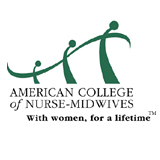
Currently, there is a national shortage of providers of primary and reproductive health care for women. Certified nurse-midwives and certified midwives (CNMs/CMs) have in-depth educational preparation that enables them to meet the health care needs of women from menarche through menopause. CNMs/CMs provide woman-centered care that is evidence-based, safe, efficient, effective, and equitable. Presently, CNMs/CMs represent a small percentage of the health care workforce, but the need for their services is increasing steadily.
One goal of the American College of Nurse-Midwives (ACNM) is that CNMs/CMs will attend 20% of births in the United States by the year 2020. To realize this goal, it will be necessary to increase the number of practicing CNMs and CMs and to create regulatory and practice environments that enable midwives to work to the full extent of their educations. The purpose of this report is to assess the progress that has been made in increasing the midwifery workforce by utilizing the most recent data on applications to, enrollment in, and graduation from midwifery education programs and trends in certification of new midwives.
Set in 2010, 1 of ACNM’s strategic goals is that by 2015, 1,000 midwives will be newly certified annually by the American Midwifery Certification Board (AMCB). Annual reporting by the AMCB demonstrates that the number of CNMs and CMs certified annually has increased since 2007 (Figure 1), but we are still less than halfway to attaining our goal of 1,000 new certificants per year.